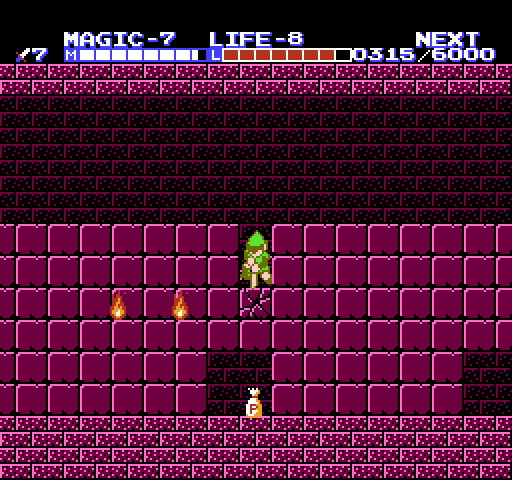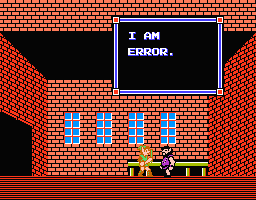
Featured Blog | This community-written post highlights the best of what the game industry has to offer. Read more like it on the Game Developer Blogs or learn how to Submit Your Own Blog Post
7 Keys to Solid Design
In this post I seek to summarise some of my key learnings over the course of 10 years making games. This article will benefit designers who are new to the industry and establishing themselves or seasoned developers who want to verify their own processes.

In development, there are a lot of things that you wish were front facing from the get go. Key's that could avoid pitfalls and help you had you known earlier. Here I seek to offer some of the keys to solid design. 7 in fact.
 1. Fail early or not at all. – There is a lot of buzz around "fail early and fail often". This is certainly more viable when you have lots of time and money and want to make the perfect product. Supercell can delve deeper into that for you here. For most developers, this simply isn’t possible. Time and resource get in the way. I prefer fail early or not at all. You can do this by chewing into the logic of something with a trusted design compadre before you run off to tools.
1. Fail early or not at all. – There is a lot of buzz around "fail early and fail often". This is certainly more viable when you have lots of time and money and want to make the perfect product. Supercell can delve deeper into that for you here. For most developers, this simply isn’t possible. Time and resource get in the way. I prefer fail early or not at all. You can do this by chewing into the logic of something with a trusted design compadre before you run off to tools.
Explore the logic in paper/doc form first. From that initial vetted brief - get it in game - prototype it. Fail it early and move on, or, dedicate time to it because it hits your core pillars for both the mission and the game. Never underestimate the importance of a formal feature sign off with lots of people involved. Get as many stakeholders as possible to see your feature, understand it and challenge the design to improve it. If it’s fun and it hits your core pillars, sign it off! Iterate and polish. If it fails the sign off, then ask why and analyse it. Failing is also ok provided you have learned something and cant take that into your iteration of the next design. Don't throw away work, learn from it. Discuss what went wrong and why.
 2. Don't show the designers hand - Don't create experiences that show your hand as a designer. It's almost never ok to do this (unless you are John Romero and realise your own head is in a level and exact revenge).
2. Don't show the designers hand - Don't create experiences that show your hand as a designer. It's almost never ok to do this (unless you are John Romero and realise your own head is in a level and exact revenge).
Create a more organic experience for the player. Ensure players can't see the experience you intended to create. Allow them to become so swept up in the gameplay they can't see the frame work. Journey is utterly brilliant in this regard. You slide through the world and its feels absolutely vast. There is no warning you are “leaving the battlefield”. You always seem to end up exactly where you need to go without even trying. The effortless soft guiding and sign posting makes it a joy to play. The truely masterful composition in level design plays a large part in the success and helps maintain immersion.
Players are often playing games to have fun and escape to a new world. That world needs to feel real in order for players to maintain immersion. If a player literally sees a bunch of enemies spawn out of nowhere based on an arbitrary trigger condition, they will break out of that world. Enemies should alert based on stimuli not a set conditions decided by the designer. Mask your conditions so the world feels believable and the player will benefit from that polish. Introduce variables to spawn logic and conditions where appropriate. Your spawn logic may not be appropriate if the player approaches from a new direction – make sure you are testing all possible outcomes. If you don’t have the time, enlist some help to. Games with large environments need testers to help you review all the possible experiences. Often the spawn conditions for enemies are a huge immersion breaker.
Killzone 2 had some of the best enemy spawning i've seen, even to this day. You could see the enemies clambering in over debris and rubble, eventually dropping down into the gameplay space to engage. The level designers created a fringe to allow for this and ensured it was outside the player metrics so didn't look accesible. You'd glimpse the realistic spawning at the fringe of gameplay and it created dread in the player whilst maintaining immersion.
 3. Allow mechanics to interplay with each other in meaningful ways - If you make a mechanic and it doesn’t have meaningful interplay with the environment, enemies, or other mechanics in more ways than one; chances are it may be quite forgettable. Design your missions and encounters around one solid mechanic and allow your players to discover the diversity of that mechanic.
3. Allow mechanics to interplay with each other in meaningful ways - If you make a mechanic and it doesn’t have meaningful interplay with the environment, enemies, or other mechanics in more ways than one; chances are it may be quite forgettable. Design your missions and encounters around one solid mechanic and allow your players to discover the diversity of that mechanic.
This doesn’t mean make a complex mechanic that interacts in different ways. Try keep it the same but have the ways of interaction differ. Give players new and exciting ways to use just one thing. Subvert their expectations as it changes from what they expect, then ask the player to adapt. Last Of Us is basically a seminar for unique world interaction. The trolley cart is used and adapted in so many ways through-out play. The second you think you have mastered it, Naughty Dog introduce a new variable to challenge you and subvert your expectations, requiring you to solve a new puzzle with the same trolley.
Let the players forge a greater understanding of a mechanic and feel clever having used it again for something new and exciting. In Sniper Elite 3 we used the flint and tinder to distract and lure enemies in to investigate the smoke. If you place dynamite in the same location, it will also ignite it. If you place it near a red barrel or stash of ammo, it will detonate it. Don't even get me started on the mechanics interplay in Dishonored - It's too vast to get into and there's a host of videos discussing the systemic interplay of the mechanics. The rule remains the same though.
So put simply, don't make it a one and done. Give your players a chance to master something and feel clever and empower them to explore other uses.
 4. Ask what the expected player competency is - What is the player competency? This is a very important question. You need an understanding of the expected skill level for the players when they get to your content. Is it the last mission and we can challenge the player more? Is it DLC where you have a delicate balance to hit content for retentive players or potentially new players? Should you warn players for DLC that the content requires prior experience with the main game? Is it middle of the rung or part of a lengthy onboarding?
4. Ask what the expected player competency is - What is the player competency? This is a very important question. You need an understanding of the expected skill level for the players when they get to your content. Is it the last mission and we can challenge the player more? Is it DLC where you have a delicate balance to hit content for retentive players or potentially new players? Should you warn players for DLC that the content requires prior experience with the main game? Is it middle of the rung or part of a lengthy onboarding?
Make sure you take a step back and get perspective of that skill level so the content isn't frustrating or too challenging. Get 'noobs in and test, shadow them as they play and write notes. Dev's cannot objectively assess their own work most of the time. You become too close to it. You need to review with lots of new players to get your true insights and discover all the options you may never have imagined.
 5. Create big and small pillars - Creating big and small pillars is a useful way of keeping yourself "on piste". For non skiers - "off piste" is back country - filled with deep powder and crevasses - "on piste" is the main slope. Off piste is a place where you will get distracted or lost in both game dev and skiing terms. You should have game pillars - these drive the fundamentals of all your development. You should also have department pillars - these drive various departments like UI or Art direction. The pillars may differ from department to department but they should all feed back to the main game pillars.
5. Create big and small pillars - Creating big and small pillars is a useful way of keeping yourself "on piste". For non skiers - "off piste" is back country - filled with deep powder and crevasses - "on piste" is the main slope. Off piste is a place where you will get distracted or lost in both game dev and skiing terms. You should have game pillars - these drive the fundamentals of all your development. You should also have department pillars - these drive various departments like UI or Art direction. The pillars may differ from department to department but they should all feed back to the main game pillars.
Most devs will use game pillars like a guideline to stay on piste and keep from getting lost. Digging deeper, you can go all the way down to a mission pillar or a mission goal. Defining mission pillars allows content to hit the priorities for that mission. If your game has a core pillar of dance, the mission pillar might be the mambo - however If you have sword fencing in your mission you have gone off piste! Fall back to your game pillars and mission pillars as often as possible to drive solid iteration and decision making.
Often once iterations occur it's quite easy to lose track of the pillars. If your pillars no longer make sense but the content is fun, ask yourself if you need to define new pillars for the mission. Why has the experience metamophasised? What was wrong with the old pillars and discuss why the design moved away. Take those learnings forward so you dont make the same mistakes again. What is ultimately "fun" will drive the experience forward so dont be affraid to stay agile.
 6. Listen - Listen to your community, your players, your bosses - everyone has ownership and buy in and also opinions. No opinion is invalid. Don’t crowd source design, but don’t be afraid to challenge other people’s designs. If people ask questions of the design, the design logic will benefit through extra attention being paid to the caveats.
6. Listen - Listen to your community, your players, your bosses - everyone has ownership and buy in and also opinions. No opinion is invalid. Don’t crowd source design, but don’t be afraid to challenge other people’s designs. If people ask questions of the design, the design logic will benefit through extra attention being paid to the caveats.
If you are making a sequel, make sure you do a review matrix based on feedback from the first game and stay in contact with your community. Essentially track all the reviews and do a count on key issues,likes and dislikes then review the amount in any category. For example, If you have 26 different reviewers raving about your level design an no negative comments, then your formula is working. If you have 10 people blasting your AI, it will need review and polish. If your UI isn't even mentioned, it's probably fine but you can still identify internal improvements! Hit anything hard that highlights in your review matrix multiple times as it's likely negative feedback on key areas is worth addressing. It's so important to ensure the community feel like their key concerns are addressed as they will forge a core part of your audience. It needs to feel like an inclusive process. Ensure the community know you are listening and open a dialogue so they can also know why your decisions are being made.
 7. Focus - Focus is easier said than done. Everyone wants to make a great game. Publishers want an abundance of content to rave about. The team want a full fat game with diversity of content. However, every feature, mechanic or mode you make, has the potential to dilute the focus on what is most important and strip away polish time from your core gameplay. Reference your pillars and look at what is important to the IP and your game. Keep your resource focused around your most important features and scope/claw back bandwidth if it ever looks like you are spread too thin.
7. Focus - Focus is easier said than done. Everyone wants to make a great game. Publishers want an abundance of content to rave about. The team want a full fat game with diversity of content. However, every feature, mechanic or mode you make, has the potential to dilute the focus on what is most important and strip away polish time from your core gameplay. Reference your pillars and look at what is important to the IP and your game. Keep your resource focused around your most important features and scope/claw back bandwidth if it ever looks like you are spread too thin.
Steven Masters delivers a great talk on keeping your game focused and hitting Feature Sign Offs with confidence. No matter how good your team is or your process is, once a team is spread too thin, you will ultimately make a lot of features to an average quality and risk burning people out, as you try to get everything to a high quality level. This goes for assigning staff too much at once. Let them focus and deliver well on one thing with excellence and then move onto the next. If you pile too much onto the plate at once, you’ll end up with a bunch of things done to a mediocre level. There are an abundance of studies that illustrate how people fail and think poorly under stress. Managers need to reduce stress by allowing teams to focus.
Thanks for your time and I hope some of these keys benifit you as a developer. Please feel free to comment any feedback or add further "keys" in comments.
*I’d caveat this article by saying that not all this information will be relevant to all types of games particularly where I reference spawn logic, enemies or even maintaining immersion. For instance presense may be more important, particularly in VR! It's mearly a guide for general development to help up and coming designers or veterans wishing to verify thier own process. Special thanks to Steven Masters and Mateusz Piaskiewicz for the reference.
All Images are from Zelda 2 The Adventure of Link
Read more about:
Featured BlogsAbout the Author(s)
You May Also Like







.jpeg?width=700&auto=webp&quality=80&disable=upscale)








